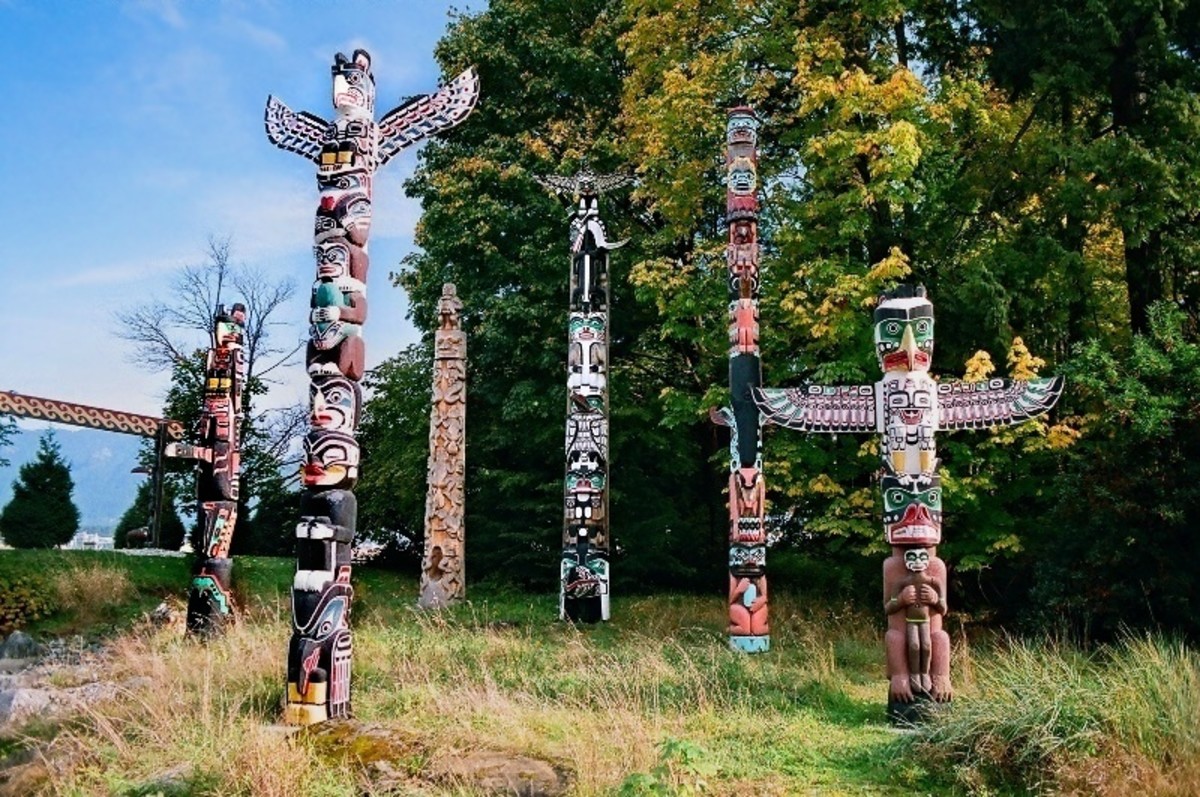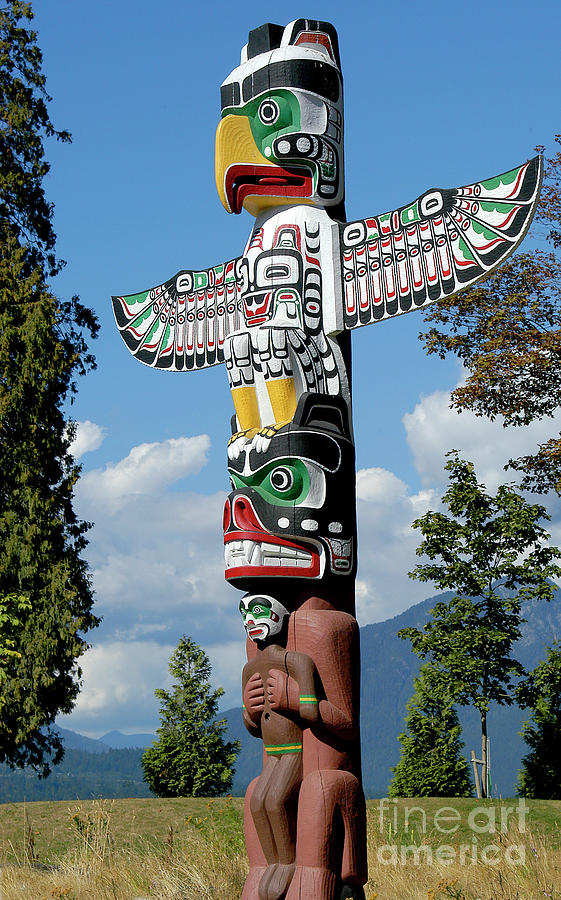The Sacred Tapestry: Unveiling the Importance of Totems in Indigenous Religions
The Sacred Tapestry: Unveiling the Importance of Totems in Indigenous Religions

Across the globe, indigenous cultures have woven a rich tapestry of beliefs and practices, intricately connected to the natural world. At the heart of many of these traditions lie totems, powerful symbols that serve as conduits to the spiritual realm, shaping identity, guiding behavior, and fostering a profound connection to the land. This article delves into the multifaceted importance of totems in indigenous religions, exploring their significance as spiritual guides, cultural anchors, and protectors of the natural world.
Beyond Symbols: The Essence of Totems
Related Articles: The Sacred Tapestry: Unveiling the Importance of Totems in Indigenous Religions
- The Land Rights Act Of 1976: A Landmark In Australian Indigenous Land Recognition
- Beyond "Australia": Unveiling The Indigenous Names For The Land Down Under
- Weaving Stories, Weaving Strength: The Power Of Storytelling In Inala Indigenous Support
- A Rainbow Of Flavors: Exploring The Diverse World Of Australian Fruits
- Weaving The Tapestry Of Time: Unraveling The Rich History Of Aboriginal Australia Before Colonisation
Totems, often depicted as animals, plants, or natural phenomena, are more than just static representations. They embody the very essence of a particular clan, family, or individual, acting as living embodiments of ancestral wisdom and spiritual power. In many indigenous cultures, totems are believed to be chosen by the spirit world, reflecting a deep connection between the human and the divine.
Guardians of Identity: The Totemic Lineage
Totemic lineages, passed down through generations, play a crucial role in shaping individual and collective identity. They define a person’s place within their community, connecting them to their ancestors and establishing a sense of belonging. This connection to the past provides a framework for understanding the present and navigating the future. For example, among the Native American tribes of the Pacific Northwest, the totemic crest of a family is often depicted on their clothing, houses, and ceremonial objects, signifying their lineage and status within the community.
Spiritual Guides: Navigating the Unseen World
Totems serve as spiritual guides, providing wisdom, protection, and guidance in navigating the complexities of life. They act as intermediaries between the human and the spirit world, offering insights into the unseen forces that shape our existence. The connection to a totem can provide strength during times of adversity, offer solace in times of grief, and inspire creative expression.
For instance, the Hopi people of the Southwest United States revere the Kachina spirits, embodied by masked dancers who represent various animal totems. These spirits are believed to bring rain, fertility, and good fortune to the community, providing spiritual guidance and protection.
Guardians of the Land: The Totemic Connection to Nature
The profound connection between totems and the natural world is fundamental to indigenous religions. Totems embody the spirit of the land, emphasizing the interconnectedness of all living things and the responsibility to protect the environment. Respect for the totem animal or plant is seen as a form of respect for the entire ecosystem.

Among the Australian Aboriginal people, the concept of "Dreaming" emphasizes the interconnectedness of all things, including humans, animals, plants, and the land itself. Totemic animals are seen as guardians of the land, representing the ancestral spirits that created the world and continue to guide its inhabitants.
Cultural Practices: Honoring the Totemic Connection
The reverence for totems is woven into the fabric of indigenous cultures, manifesting in a variety of practices and rituals. These include:
- Ceremonial dances and songs: Totems are often honored through dances and songs that depict their characteristics and behaviors, celebrating their strength, wisdom, and connection to the land.
- Art and crafts: Totems are frequently depicted in carvings, paintings, and other forms of art, serving as visual reminders of the spiritual connection to the natural world.
- Naming ceremonies: Children are often given names that reflect their totemic lineage, further connecting them to their heritage and the spirit world.
- Hunting and gathering practices: The respect for totemic animals and plants influences hunting and gathering practices, ensuring sustainable use of natural resources and maintaining a balance within the ecosystem.

The Enduring Legacy of Totems

The importance of totems in indigenous religions extends far beyond the realm of symbolism. They represent a profound understanding of the interconnectedness of all things, emphasizing the spiritual power of the natural world and the responsibility to live in harmony with it.
As we navigate the complexities of the modern world, the lessons embedded within indigenous cultures offer valuable insights into sustainable living, respect for the environment, and the importance of preserving cultural traditions. The enduring legacy of totems serves as a powerful reminder of the deep connection between humans and the natural world, inspiring us to foster a greater sense of respect, responsibility, and interconnectedness in our own lives.
FAQ: The Importance of Totems in Indigenous Religions
Q: What are totems?
A: Totems are powerful symbols, often depicted as animals, plants, or natural phenomena, that represent the essence of a particular clan, family, or individual. They embody ancestral wisdom and spiritual power, acting as conduits to the spirit world.
Q: How are totems chosen?
A: In many indigenous cultures, totems are believed to be chosen by the spirit world, reflecting a deep connection between the human and the divine. The choice of a totem often reflects the unique characteristics and experiences of a particular lineage or individual.
Q: What is the significance of totemic lineages?
A: Totemic lineages, passed down through generations, define a person’s place within their community and connect them to their ancestors. They provide a framework for understanding identity, history, and cultural values.
Q: How do totems serve as spiritual guides?
A: Totems act as intermediaries between the human and the spirit world, offering wisdom, protection, and guidance in navigating the complexities of life. They provide strength during times of adversity, offer solace in times of grief, and inspire creative expression.
Q: What is the connection between totems and the natural world?
A: Totems embody the spirit of the land, emphasizing the interconnectedness of all living things and the responsibility to protect the environment. Respect for the totem animal or plant is seen as a form of respect for the entire ecosystem.
Q: What are some examples of cultural practices that honor totems?
A: Indigenous cultures honor totems through ceremonial dances and songs, art and crafts, naming ceremonies, and hunting and gathering practices that reflect a deep respect for the natural world.
Q: Why are totems still important today?
A: The enduring legacy of totems serves as a powerful reminder of the deep connection between humans and the natural world. They offer valuable insights into sustainable living, respect for the environment, and the importance of preserving cultural traditions.

Closure
Thus, we hope this article has provided valuable insights into The Sacred Tapestry: Unveiling the Importance of Totems in Indigenous Religions. We thank you for taking the time to read this article. See you in our next article!